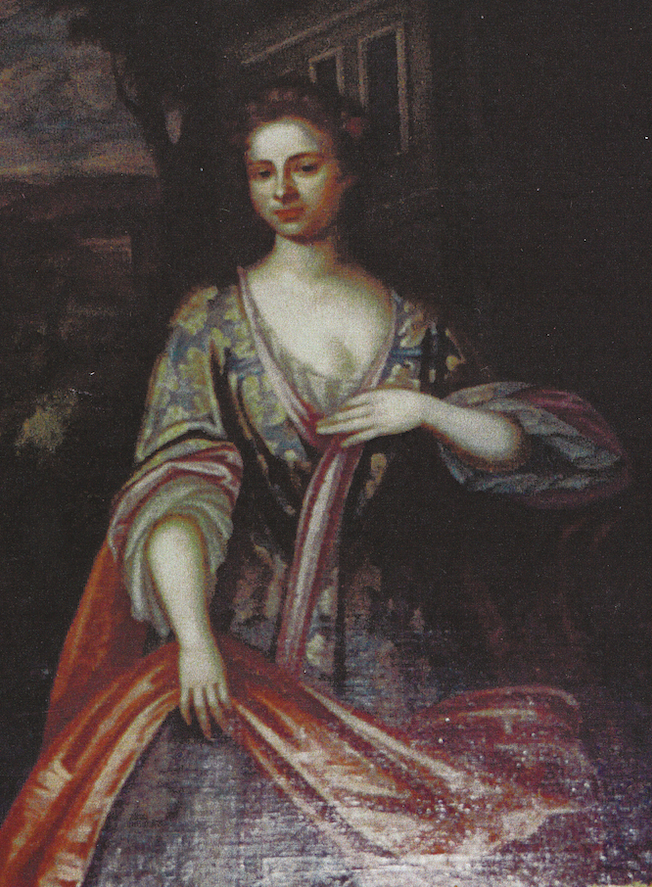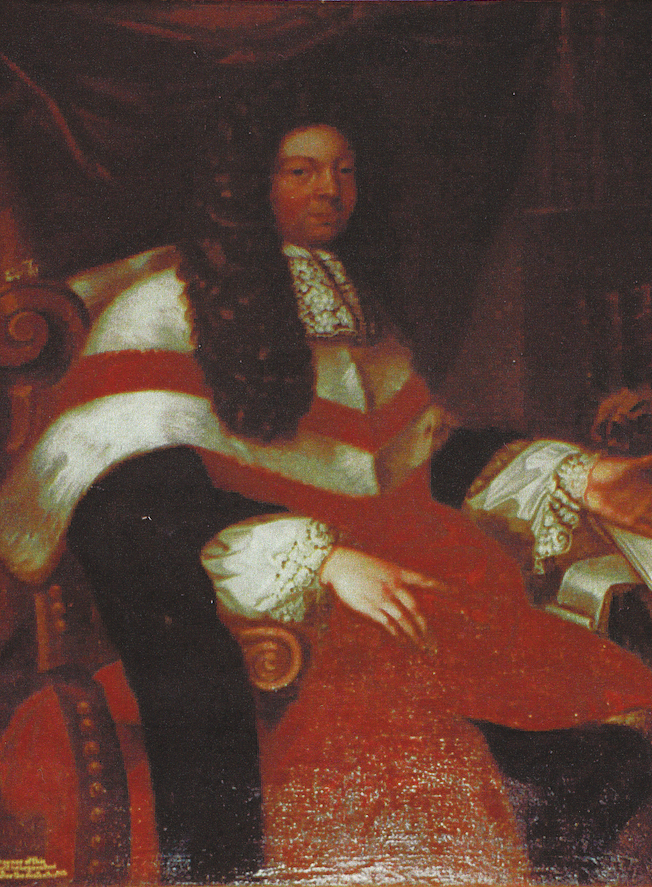The Johnson Portraits
Have you ever thought about the large portraits on the wall outside the Hall? Having previously been in a less obvious position in Landor Library on the Smith Street site they now look down on the new vital and busy corridor and witness the comings and goings of the school community. But who are they?


The Johnsons come to Warwick
Dr William and Mrs Ann Johnson (often spelt Johnston) came to Warwick around 1675. At that time, Warwick was a thriving county town with an increasing population. Little is known of Ann’s early years but a memorial monument in St Mary’s Church show that Dr William was 82 when he died so therefore was born about 1643. His father had an estate between Lisburn and Belfast in Northern Ireland and it is likely that William was born there. He received the Doctor of Medicine from the University of Angers in 1673 and this was incorporated into a Doctor of Medicine of the University of Cambridge in 1682. He became licenced by the Royal College of Physicians and became a Fellow of the College in 1685 and it is possible that the portraits date from this time and were painted as a celebration of his achievements and rising status within the medical profession and town.
The Building of Landor House
On moving to Warwick, the Johnsons moved into a house on the corner of Smith Street and Chapel Street but, with eight children by 1690, they decided that they needed a larger house. After a lengthy lawsuit with the previous owner they took over the house in 1693 for £500. Roger Hurlbut, a well-known local carpenter, was engaged and drew up plans to demolish parts of the older building but retaining some rooms near the corner of Smith Street the walls of which can still be seen. As the Johnsons had also purchased the two black and white timbered cottages closer to Eastgate the whole site was re-developed. Eventually, the current house was built.
Eastgate House (later named Landor House) had three staircases with several ground floor reception rooms, bedrooms on the first floor and garret rooms for servants. The garden extended halfway up the Butts and had a summer house for sitting in and enjoying the view. Produce from the garden enabled the family to be self-sufficient for food. Not only were fruit and vegetables grown but out-houses included a dairy, hen house , ‘grainery’, a barn, pig sty, stables and coach house, coal house, hen house and a fully equipped brewery. One of the Smith Street cottages was let out and turned into a public house, The Nag’s Head, in 1708. The activities and number of animals in that corner of Warwick must have made it quite noisy at times!
Death of Dr Johnson
Having been doctor to the people of Warwick and local gentry for many years, Dr William died in November 1725 at 82. In his will he left bequests to both St Mary’s and St Nicholas’ Churches for the distribution of £5 to the poor on Christmas Day. The remainder of his estate went to his wife, Ann. Both were buried in St Mary’s Church.
Ann Johnson’s later life and the Ann Johnson Charity
Ann was about 77 when William died. A number of her children had also previously died, and her daughters had married and moved away but Ann continued to live alone in the house that she and William had built with just servants for company. The estate was managed by James Fish who was later executor and assisted her in drawing up plans for a Trust which she included in her Will. When Ann died at 84 on 4th of April 1733 this Trust came into effect. The contents of the house were sold for £1000, the estate in Northern Ireland also sold raising £1300. The house was let and proved a source of income to the new Ann Johnson Charity which concentrated on numerous small payments to the poor and needy such as ‘blind Charles Smith 5 shillings’ and ‘Thomas Williams for to buy a shirt 4 shillings. The Charity supported the King’s School and eventually passed the house to them in lieu of any other ongoing donations. Today, the Ann Johnson Charity is a part of the United Warwick Charities.
The Portraits
The portraits’ artist is unknown. Both are in a style which is typical of portraiture of the late seventeenth century. Dr Johnson’s shows him dressed in academic robes and there is a skull and books reflecting his professional state. Ann’s portrait contains a large house in the background, but this is not the house in Warwick. It is possible that all but the faces were painted to a standard formula and therefore may not have depicted actual settings. With so many wealthy people commissioning their portraits at this time it is possible that most of each portrait was painted by an apprentice or less senior member of the artist’s studio with just the important faces added by the master artist.
The portraits hung in the Court House for fifty years but were returned to Landor House to celebrate the 75th anniversary of the opening of King’s High School in 1954. They hung in the dining room for a while before being relocated to Landor Library.
The ‘Baby Portrait’
Between the two Johnson portraits is a rather enigmatic painting depicting a young child. Victorian writing in one corner identifies him as the Johnson’s son but this is extremely unlikely. It could be that it represents associations that Dr Johnson did not want made generally public at the time. Ongoing research is being carried out to try and get to the bottom of a mystery. Watch this space for results!
Jennifer Edwards, School Archivist and Old Girl